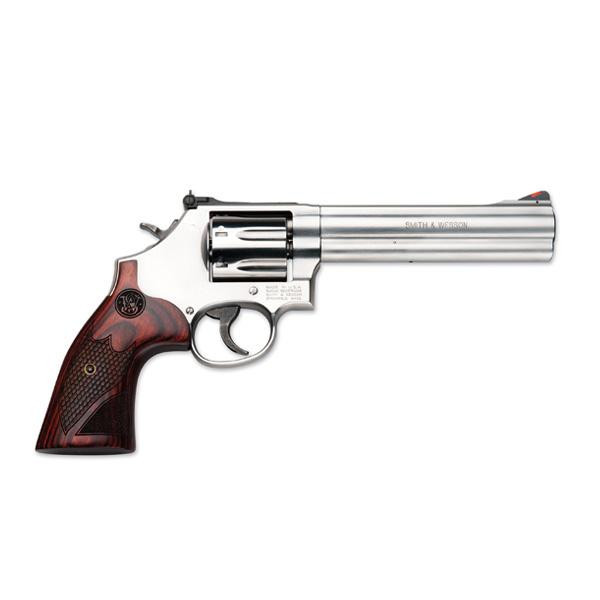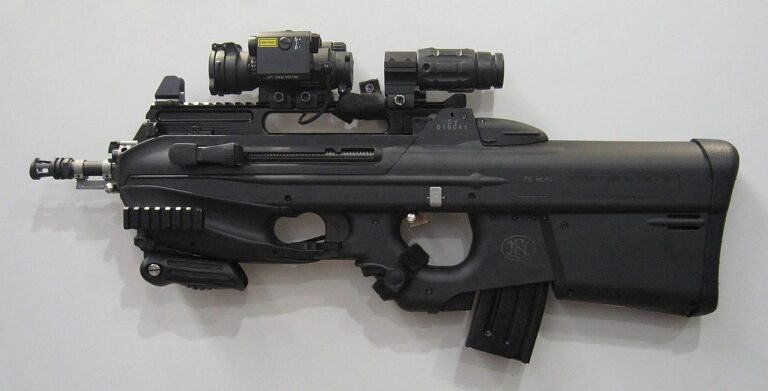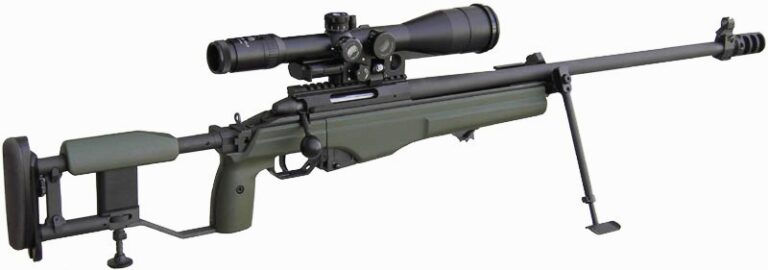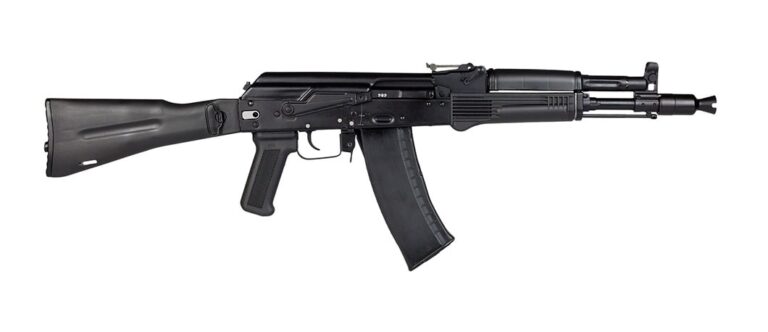Introduction
The M40 is a bolt-action precision rifle chambered in 7.62×51 mm NATO, designed and adopted by the United States Marine Corps (USMC ) as early as the Vietnam War. Based on a Remington 700 platform, it has undergone more than half a century of evolution and modernization, while remaining true to its vocation: to offer snipers a simple, rugged weapon with formidable accuracy.
Unlike other weapons developed for the armed forces as a whole, the M40 is a project exclusively managed, assembled and maintained by USMC gunsmiths, giving it a unique status and special attention to manufacturing quality.
History and development
M40 (1966)
The first M40 was introduced in 1966, at the height of the Vietnam War. It was based on a Remington 700 action with a wooden stock and a Redfield 3-9x scope. The weapon is relatively simple, but its reliability in combat quickly justifies its adoption.
M40A1 (late 1970s)
Early criticism of the M40 concerned the fragility of the wooden stock in the humid environments of Vietnam. The A1 version introduces a tougher fiberglass McMillan stock, an improved scope (Unertl) and a floating match barrel.
M40A3 (2001)
Completely redesigned version, with McMillan A4 stock, Picatinny rails, improved trigger, 25-inch Schneider heavy barrel and Schmidt & Bender scope. It became the standard in the 2000s.
M40A5 (2010)
Adds barrel thread for sound moderator, detachable magazine and modular rail. More flexible for modern operations.
M40A6 (2016)
The latest version adopts a Remington Defense chassis-type modular stock, with integrated rails, improved ergonomics, compatibility with various accessories, and the same 7.62 mm caliber. It marks the ultimate evolution of the M40 before its gradual replacement by semi-automatic platforms such as the M110A1.
Technical specifications (M40A6 version)
| Features | Detail |
|---|---|
| Caliber | 7.62×51 mm NATO (.308 Win) |
| Capacity | 5 shots (detachable magazine) |
| Overall length | 1,090 mm |
| Barrel length | 610 mm (24 inches) |
| Mechanism | Lock, Remington 700 action |
| Canon | Schneider match, threaded |
| Stock | Modular, aluminium/polymer |
| Optics | Schmidt & Bender 3-12×50 mm |
| Accessories | Bipod, rails, moderator possible |
| Accuracy | < 1 MOA with Match ammunition |
Manufacturing and assembly
The M40 is hand-assembled in the Marine Corps Base Quantico armament workshops, by specialized gunsmiths. This process guarantees exceptional construction rigor:
Selection of high-quality components (Remington 700, Schneider barrel)
Mount the bezel carefully to avoid maladjustment
Polishing and adjustment of lock and case
This artisanal approach sets the M40 apart from other military rifles, which are often mass-produced.
Comparison with other bolt action rifles
| Model | Caliber | Main use |
|---|---|---|
| M40A6 | 7.62×51 mm | USMC shooters |
| M24 SWS | 7.62×51 mm | US Army |
| L96A1 | 7.62×51 mm | British Army |
The M40 is often compared to the M24 used by the army. While both share a common base (Remington 700), the M24 uses a long-action compatible .300 Win Mag (in certain variants), while the M40 remains in standard NATO caliber.
Operational use
The M40 has been used by USMC snipers in virtually every modern conflict:
Vietnam War
Gulf War
Iraq and Afghanistan
Appreciated for its simplicity, accuracy and ruggedness, it has been the weapon of choice for Marine Corps snipers for over 50 years.
Progressive replacement
With the evolution of operational theaters and the need for longer or faster shots, the M40 is gradually being replaced by :
The M110A1 (HK G28 ) for semi-automatic use
The Mk13 Mod 7, chambered in .300 Win Mag, for greater range
Nevertheless, many Marine Corps shooters continue to regard the M40 as a reliable, benchmark weapon.
Conclusion
The M40 is more than just a bolt-action rifle: it’s an institution within the USMC, a symbol of precision and rigor, the fruit of exceptional gunsmithing expertise. Through its various versions, it has evolved without ever betraying its primary mission: to enable a sniper to hit his target reliably and accurately, whatever the conditions.
Its legacy lives on in the memory of American snipers and in the history of modern military weaponry.









